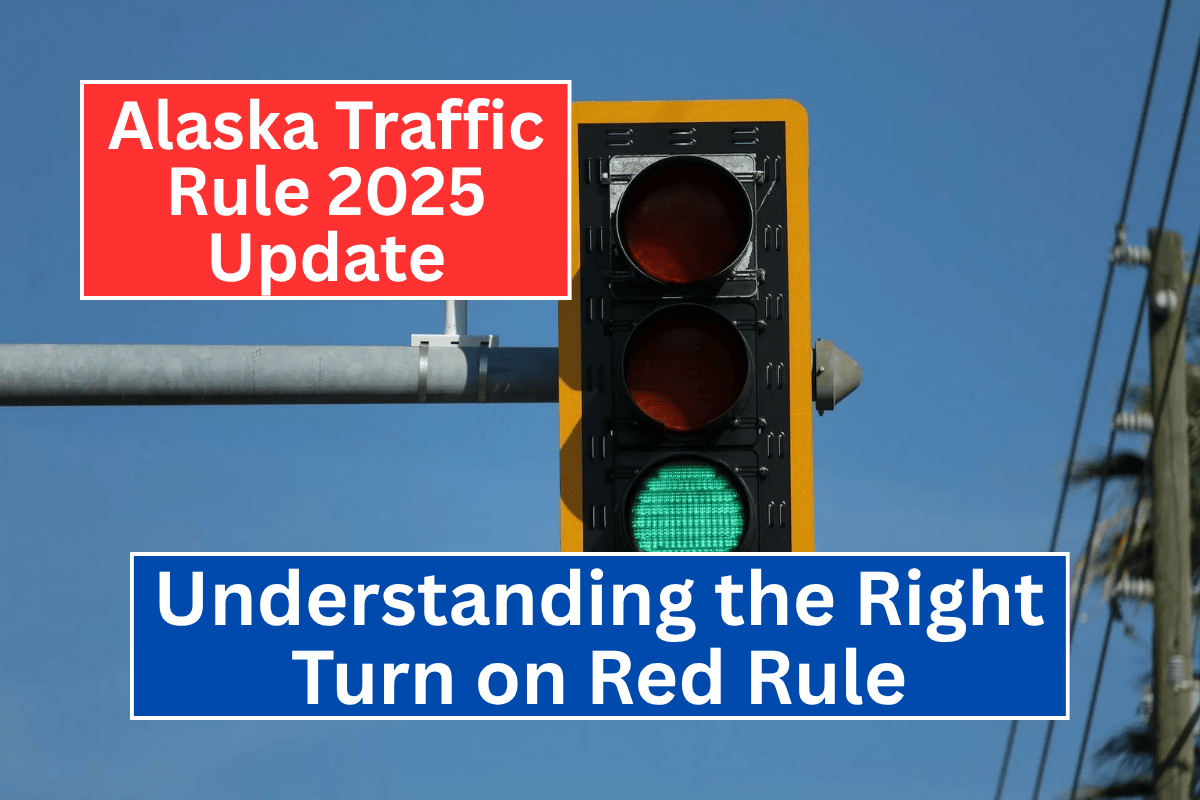Many drivers are used to turning right at a red light, but have you ever wondered why this is allowed? In Alaska and many other U.S. states, making a right turn at a red light is usually legal, but there are rules to follow.
This article explains how the Right Turn on Red (RTOR) rule started, why it was made, and what it means for drivers in Alaska in 2025.
How Did Right Turn on Red Start?
The Right Turn on Red rule began many years ago. The first state to allow it was California in 1947. After that, more states followed. By 1972, states like Alaska, Florida, Nevada, and Minnesota had similar laws. But it became popular across the country during the 1970s oil crisis when fuel was very expensive and hard to find.
To save fuel, the U.S. government made a rule under the Energy Policy and Conservation Act of 1975. States had to allow right turns on red lights to get federal help for energy-saving programs. The idea was simple: waiting at red lights wastes fuel, so letting drivers turn right (when safe) would help save it.
What the Federal Law Says
According to federal law 42 U.S.C. § 6322(c), every state that wants federal help for saving energy must allow drivers to turn right at a red light after stopping. Also, turning left on red is allowed in some cases—from one-way streets onto other one-way streets.
Is Left on Red Allowed?
Yes, in some states, including New York, you can turn left on red, but only if you are on a one-way street turning onto another one-way street. Not all states allow this, so always check the local traffic rules.
Is RTOR Safe?
Studies show that right turns on red don’t lead to many extra car crashes. However, there are risks for pedestrians and bicyclists. In many accidents, drivers didn’t see people crossing the road or riding bicycles before turning.
This happens because drivers mostly look to their left for oncoming cars, not to their right for people walking or biking.
Watch Out for Red-Light Cameras
In some cities, red-light cameras take pictures and issue tickets if a driver turns without stopping fully at a red light. Even if turning is legal, not stopping properly can result in a fine. To avoid this, make sure you come to a full stop, wait a few seconds, and only turn if it’s safe.
How to Follow RTOR Rules in Alaska
Check If It’s Allowed
First, look for signs. If there’s a “No Turn on Red” sign, you cannot turn. Also, in some busy areas like downtown Anchorage, right turns on red might be restricted.
Stop Completely
Before turning, stop like you would at a stop sign. You can count “one Mississippi, two Mississippi, three Mississippi, four Mississippi” to make sure you’ve stopped long enough.
Look Around Carefully
After stopping, look for cars, pedestrians, and cyclists. Check your mirrors, especially the one on the right side. Many accidents happen because people don’t look carefully before turning.
The Right Turn on Red rule was created to save fuel and time, and it still helps today. In Alaska, it remains legal in 2025, but it comes with responsibilities.
Always stop fully, check your surroundings, and make sure it’s safe to turn. Remember, laws can vary from one city to another, so always stay alert. A safe road depends on all of us—drivers, pedestrians, and cyclists—sharing the space wisely and carefully.












